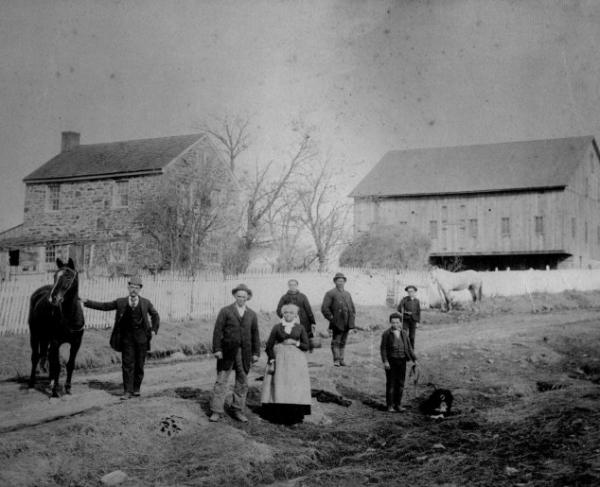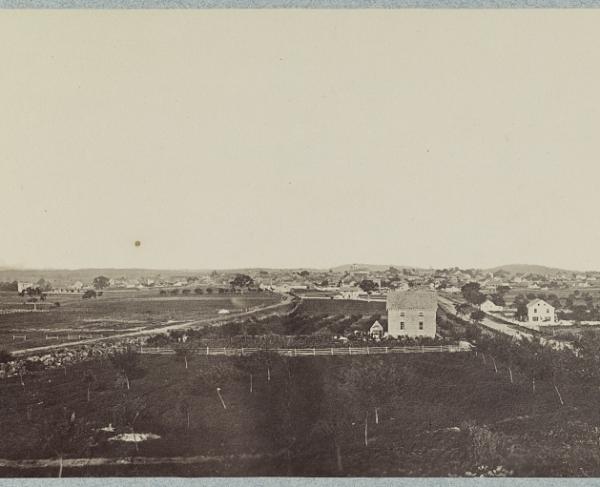
Fort Sumter Ablaze
The American Civil War was the defining event in our nation’s history. Between 1861 and 1865 10,000 battles and engagements were fought across the continent, from Vermont to the New Mexico Territory, and beyond. Many elements of Civil War scholarship are still hotly debated. The facts on this page are based on the soundest information available. We provide facts, dates, figures, tables and clarification of common misconceptions. View the American Revolution and War of 1812 facts.
- When did the Civil War begin?
- When did the Civil War end?
- What caused the Civil War?
- What was the Election of 1860?
- Was Secession legal?
- What states were in the Confederacy?
- What were the Union States?
- What were the Border States?
- Where was the Civil War fought?
- How many Civil War battles were there?
- Why do some battles have different names?
- What were the bloodiest battles of the Civil War?
- Were there naval battles during the Civil War?
- What was the range of Civil War artillery?
- Are there photographs of Civil War battles?
- Who won the Civil War?
- How were the armies organized?
- What was the average soldier's age?
- How much were soldiers paid?
- What did soldiers eat?
- What did soldiers do in their free time?
- How did the draft work?
- What role did African-Americans play in the war effort?
- Were there black Confederate soldiers?
- What was the role of Native Americans during the Civil War?
- How many soldiers fought in the Civil War?
- How many soldiers died in the Civil War?
- Did anybody receive the Medal of Honor in the Civil War?
- What is a casualty?
- What caused casualties during a battle?
- What happened to the dead?
- How advanced was medicine during the Civil War?
- What happened to prisoners?
- What was Reconstruction?
- What are some of the best Civil War books?
- How much battlefield land has the American Battlefield Trust saved?
Q. When did the Civil War begin?
The war began when the Confederates bombarded Union soldiers at Fort Sumter, South Carolina on April 12, 1861. The war ended in Spring, 1865. Robert E. Lee surrendered the last major Confederate army to Ulysses S. Grant at Appomattox Courthouse on April 9, 1865. The last battle was fought at Palmito Ranch, Texas, on May 13, 1865.
Q. When did the Civil War end?
In the east, Robert E. Lee surrendered Confederate army to Ulysses S. Grant at Appomattox Courthouse on April 9, 1865. General Joseph E. Johnston surrendered approximately 90,000 Confederates stationed in North Carolina, South Carolina, Georgia and Florida, on April 26, 1865, at Bennett Place in North Carolina. However, Bennett Place was not the last Confederate surrender, that occurred on June 23, 1865, with Gen. Stand Watie’s Indian Territory troops. The last battle of the Civil War was fought at Palmito Ranch, Texas, on May 13, 1865.
Q. What caused the Civil War?
While many still debate the ultimate causes of the Civil War, Pulitzer Prize-winning author James McPherson writes that "The Civil War started because of uncompromising differences between the free and slave states over the power of the national government to prohibit slavery in the territories that had not yet become states. When Abraham Lincoln won election in 1860 as the first Republican president on a platform pledging to keep slavery out of the territories, seven slave states in the deep South seceded and formed a new nation, the Confederate States of America. The incoming Lincoln administration and most of the Northern people refused to recognize the legitimacy of secession. They feared that it would discredit democracy and create a fatal precedent that would eventually fragment the no-longer United States into several small, squabbling countries."
Learn more about the Trigger Events of the Civil War
Q. What was the Election of 1860?
The election of 1860 was one of the most unusual in American history. In a four-way race brought on by a split in the Democratic Party, Abraham Lincoln's name did not even appear on the ballot in most Southern states. In the electoral college, Lincoln solidly carried the free states of the Northeast and Northwest. Breckenridge won the slaveholding states, with the exception of Tennessee, Virginia, and Kentucky in the Upper South, which went to Bell. Douglas, though he made a solid showing in the popular vote, only took electoral votes from Missouri and New Jersey.
Abraham Lincoln of Illinois, Republican Party: 39.8%
Stephen A. Douglas of Illinois, Northern Democratic Party: 29.5%
John C. Breckenridge of Kentucky, Southern Democratic Party: 18.1%
John Bell of Tennessee, Constitutional Union Party: 12.6%
Q. Was secession legal?
No, although it was not ruled illegal until after the war. This was a complex question at the time, with able legal minds to be found arguing both sides, but the United States Supreme Court, in Texas v. White, 74 U.S. 700 (1868), determined that secession was unconstitutional. Chief Justice Salmon Chase wrote in his majority opinion that, "The ordinance of secession...and all the acts of legislature intended to give effect to that ordinance, were absolutely null. They were utterly without operation in law."
Q. What states fought for the Confederacy? When did they secede?
South Carolina - December 20, 1860
Mississippi - January 9, 1861
Florida - January 10, 1861
Alabama - January 11, 1861
Georgia - January 19, 1861
Louisiana - January 26, 1861
Texas - February 1, 1861
Virginia - April 17, 1861
Arkansas - May 6, 1861
North Carolina - May 20, 1861
Tennessee - June 8, 1861
Q. What states fought for the Union?
Maine, New York, New Hampshire, Vermont, Massachusetts, Connecticut, Rhode Island, Pennsylvania, New Jersey, Ohio, Indiana, Illinois, Kansas, Michigan, Wisconsin, Minnesota, Iowa, California, Nevada, and Oregon fought for the Union and supported Abraham Lincoln. The northern economy was based on industry; factories and production provided most of the wealth.
Q. What were the border states?
Maryland, Delaware, West Virginia, Kentucky, and Missouri were considered Border States.
Q. Where was the Civil War fought?
The Civil War was fought in thousands of different places, from southern Pennsylvania to Texas; from New Mexico to the Florida coast. The majority of the fighting took place in the states of Virginia and Tennessee. The Civil War was also contested on the Gulf of Mexico, and the brown water of the Mississippi River and its tributaries, and on the Atlantic Ocean as far off as the coast of France.
Q. How many battles were fought during the Civil War?
Although over 10,500 military engagements occurred during the Civil War, it is generally accepted that there were 50 major battles of the Civil War, with about 100 other significant battles. The battles were fought in three theaters; the Eastern Theater, the Western Theater, and the Trans-Mississippi Theater.
Q. Why are there alternate names for Civil War battles?
Union commanders typically named battles after the nearest river or creek. Confederates typically named battles after the nearest city or town. But these rules did not always apply; they were highly dependent on the names employed by the victors, the public and the media.
Q. What were the bloodiest battles of the Civil War?

Gettysburg – 51,000 casualties
Chickamauga – 34,624 casualties
Spotsylvania – 30,000 casualties
The Wilderness – 29,800 casualties
Chancellorsville – 24,000 casualties
Shiloh – 23,746 casualties
Stones River – 23,515 casualties
Antietam – 22,717 casualties
Second Manassas – 22,180 casualties
Vicksburg – 19,233 casualties
Q. Were there naval battles during the Civil War?
Yes, the North and South waged war on the Atlantic Ocean, in the Gulf of Mexico, and in the rivers of the mainland. Cotton trade with Europe was vital to the Southern war effort, which led Union General-in-Chief Winfield Scott to order a strangling blockade known as the "Anaconda Plan." While Southern blockade runners tested this screen, engineers were inventing the first ironclad warships the world had ever seen. On the rivers, gunboats, shore batteries, and island fortresses entered the battle as both sides fought for control of inland arteries that were essential to the fast transport of men and material. The Civil War at sea, mostly notably with the development of the ironclads, changed the trajectory of naval warfare around the globe. | Civil War Navies
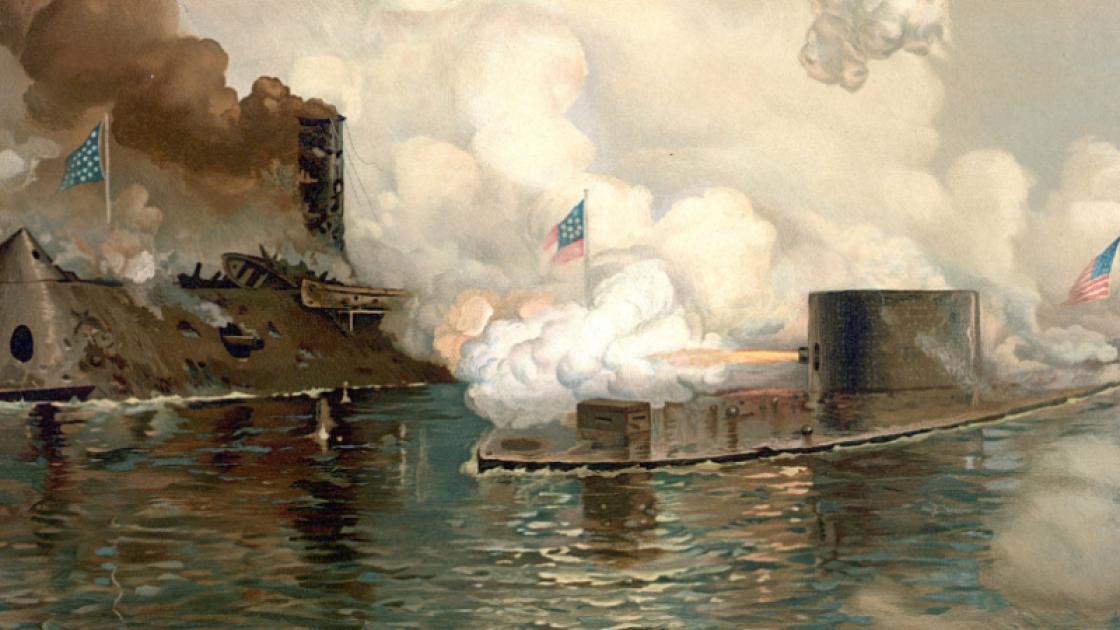
Q. What was the range of Civil War artillery?
Smoothbore cannons, such as the 12-pounder Napoleon, had a range of around three-quarters of a mile; rifled cannons, such as the 10-pounder Parrott, had a range of one and a half miles, or about double that of a smoothbore. Some larger cannons and imported pieces could fire even farther.
Q. Are there photographs of Civil War battles?
Photography was a new art form when the Civil War broke out. The cameras and chemicals available at the time were too unwieldy and unstable to accommodate the chaos of a battlefield. Nevertheless, a few photographs of Civil War combat do exist, including images of artillery bombardments, gunboat broadsides, and battle smoke at Nashville and Fredericksburg. Thousands of other Civil War photographs can be found online at the Library of Congress.
Learn more about Civil War Photography
Q. Who won the Civil War?
The Federal army was victorious, and the rebellious states returned to the Union.
Q. How were the armies organized?
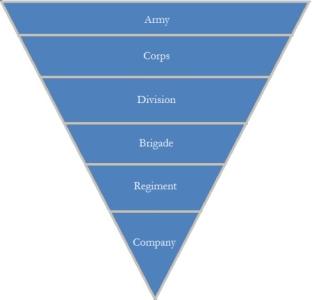
The largest military unit is the army, which is sub-divided into smaller commands. Although organization varied between the armies, the largest sub-section of a given army was the corps, which was typically divided into two or more divisions, each composed of two or more brigades, which were each made up of two or more regiments, with each regiment containing roughly ten companies of ideally 100 men (but more typically near 30). Companies themselves were subdivided into platoons and squads before the army finally reached the level of the individual soldier. Armies were sometimes grouped together in "departments" that were defined by geography and operational objective.
Q. What was the average soldier's age?
The average Union soldier was 25.8 years old; there is no definite information on the average age of Confederate soldiers, but by the end of the war old men and young boys, who otherwise would have stayed home, were being pressed into service. The average soldier on both sides was a white, native-born, protestant farmer.
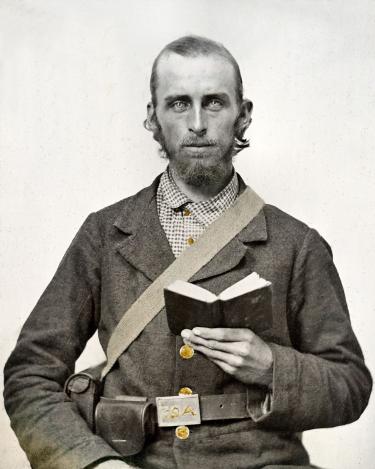
Q. How much were soldiers paid?
A white Union private made thirteen dollars a month; his black counterpart made seven dollars until Congress rectified the discrepancy in 1864. A Confederate private ostensibly made eleven dollars a month, but often went long stretches with no pay at all.
Q. What did soldiers eat?
Civil War soldiers' fare varied substantially from army to army and throughout the course of the war for both sides. For the most part, neither side ate particularly well. Hardtack and coffee were the staples, in addition to salt pork, corn meal and whatever fruits, vegetables and berries could be collected on the march. Many Confederate soldiers were in a state of near-starvation by the war's end.
Q. What did soldiers do in their free time?
When they were not drilling, which made up a considerable portion of their time in camp, soldiers passed the time writing letters, playing games like checkers, dominoes and poker, drinking, smoking, whittling, making music and praying. One soldier summed it up when he wrote to his wife, "Soldiering is 99% boredom and 1% sheer terror."
Learn more about Civil War Winter Encampments
Q. How did the draft work?
The Confederacy instituted the first draft in American history in April of 1862. It was clear that the South, with a total population of 9 million (including 4 million slaves), would have to muster all of its manpower to repel the North, which had an 1860 population of around 22 million. The Confederate draft exempted those who owned twenty slaves or more, however, arousing resentment amongst the poor whites who constituted the vast majority of the army. Abraham Lincoln instituted a draft on the Northern states a year later, likewise calling on all able-bodied 18-35 year old men to serve. There were exemptions in the North, too, if those drafted could pay a significant fee or provide a substitute.
Q. What role did African-Americans play in the war effort?
With the issuance of the Emancipation Proclamation in September 1862, African-Americans - both free and runaway slaves - came forward to volunteer for the Union cause in substantial numbers. Beginning in October, approximately 180,000 African-Americans, comprising 163 units, served in the U.S. Army, and 18,000 in the Navy. That month, the 1st Kansas Colored Volunteers repulsed a Confederate attack at Island Mound, Missouri. Men of the U.S.C.T. (United States Colored Troops) units went on to distinguish themselves on battlefields east and west - at Port Hudson, Louisiana; Honey Springs, Oklahoma; Fort Wagner, South Carolina; New Market Heights, Virginia. African Americans constituted 10% of the entire Union Army by the end of the war, and nearly 40,000 died over the course of the war.
Native Americans fought on both sides of the Civil War. Many members of tribes fought for the Confederacy because they viewed the system of a confederation of states as easier to negotiate with, as opposed to the federal government who had been difficult, if not impossible, to negotiate with. Members of the "Five Civilized Tribes" of the South had become part of Southern society in many ways including plantations and owning slaves. Stand Watie, a member of the Cherokee Nation, was the highest-ranking Native American on either side of the conflict after earning the rank of general. As the war continued, the Cherokee Nation split over who to support, but eventually issuing their own Emancipation Proclamation.
Learn more about African Americans in the Civil War
Q. Were there black Confederate soldiers?
Slaves and free blacks were present in the Confederate lines as servants and manual laborers. On March 13, 1865, the Confederate Congress passed a law to allow black men to serve in combat roles, with the provision "that nothing in this act shall be construed to authorize a change in the relation which said slaves shall bear toward their owners," i.e. that black soldiers would still be slaves. On March 14, 1865, the Confederate military issued General Orders No. 14, which provided for the raising of black combat regiments, but there is no official military documentation that indicates these orders were carried out or that any black soldiers were ever properly enlisted in the Confederate army. There are a few photographs of blacks in Confederate uniforms, but these appear to be hoaxes.
Learn more about the truths and legends concerning "Black Confederates"
Q. What was the role of Native Americans during the Civil War?
Native Americans fought on both sides of the Civil War. Many members of tribes fought for the Confederacy because they viewed the system of a confederation of states as easier to negotiate with, as opposed to the federal government which had been difficult, if not impossible, to negotiate with. Members of the "Five Civilized Tribes" of the South had become part of Southern society in many ways including plantations and owning slaves. Stand Watie, a member of the Cherokee Nation, was the highest-ranking Native American on either side of the conflict after earning the rank of general. As the war continued, the Cherokee Nation split over who to support, but eventually issued their own Emancipation Proclamation.
Learn more about Native Americans in the Civil War
Q. How many soldiers fought in the Civil War?
At the beginning of the war the Northern states had a combined population of 22 million people. The Southern states had a combined population of about 9 million. This disparity was reflected in the size of the armies in the field. The Union forces outnumbered the Confederates roughly two to one.

Q. How many soldiers died in the Civil War?
Approximately 620,000 soldiers died from combat, accident, starvation, and disease during the Civil War. This number comes from an 1889 study of the war performed by William F. Fox and Thomas Leonard Livermore. Both men fought for the Union. Their estimate is derived from an exhaustive study of the combat and casualty records generated by the armies over five years of fighting. A recent study puts the number of dead as high as 850,000. Roughly 1,264,000 American soldiers have died in the nation's wars--620,000 in the Civil War and 644,000 in all other conflicts. It was only as recently as the Vietnam War that the number of American deaths in foreign wars eclipsed the number who died in the Civil War.
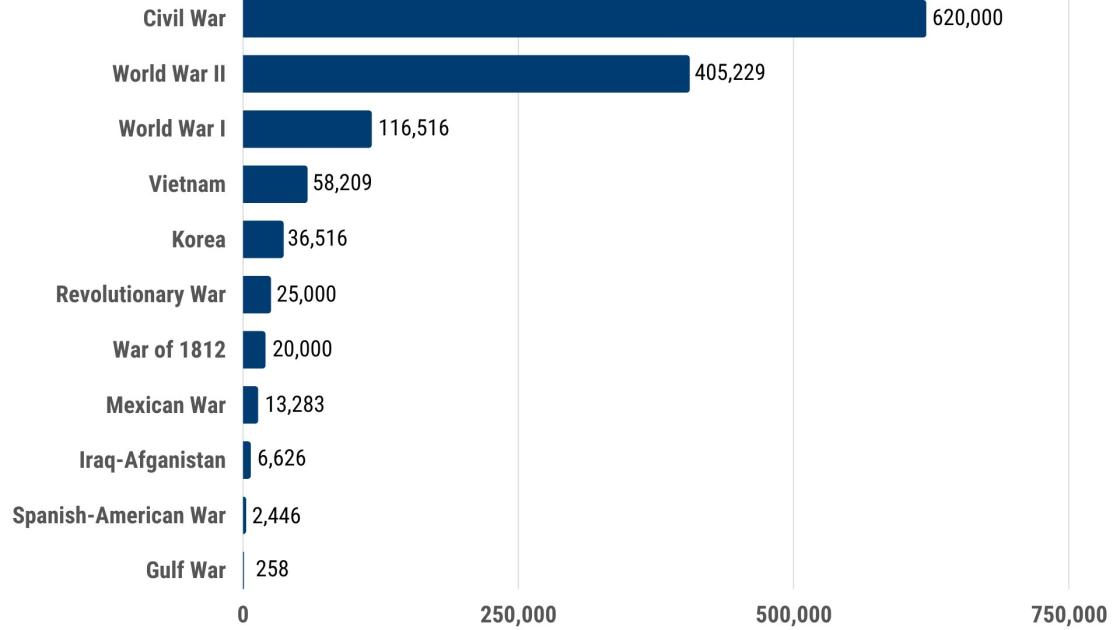
Q. Did anybody receive the Medal of Honor in the Civil War?
Yes. There were 1,522 Medals of Honor presented to Northern troops, black and white, during and after the war. The Confederate Army did not have combat medals. Gen. Robert E. Lee explained that the highest honor possible was to be "mentioned in dispatches," in other words, to be included in an officer's report for particularly gallant conduct. John Singleton Mosby, the "Grey Ghost," was mentioned in dispatches more than any other Confederate soldier.
Learn more about the Medal of Honor
Q. What is a casualty?
Too often, people take 'casualty' and 'fatality' to be interchangeable terms. In fact, a casualty is "a military person lost through death, wounds, injury, sickness, internment, or capture or through being missing in action." Essentially, a casualty is any soldier who goes into a fight and does not return fit to take part in the next battle. Many soldiers, especially in the Confederate ranks, became casualties several times: some soldiers were captured multiple times; some were wounded in non-consecutive engagements.
Q. What caused casualties during a battle?
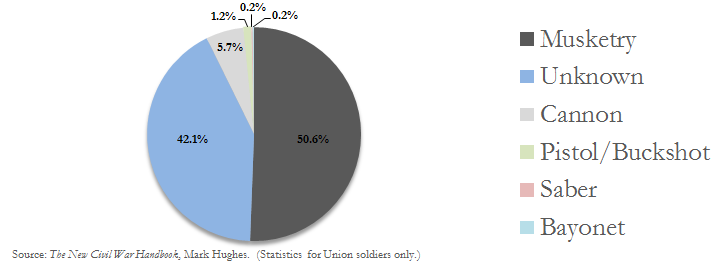
Q. What happened to the dead?
Typically, soldiers were buried where they fell on the battlefield. Others were buried near the hospitals where they died. At most battlefields, the dead were exhumed and moved to National or Confederate cemeteries, but because there were so many bodies, and because of the time and effort it took to disinter them, there are undoubtedly thousands if not tens of thousands of Civil War soldiers in unknown battlefield graves.
Q. How advanced was medicine during the Civil War?
Two-thirds of those killed in the Civil War died of disease. Germ theory had not been widely accepted in the medical world at the time of the Civil War and modern antiseptics, which could have greatly reduced the spread of bacteria and the outbreak of disease, did not exist. As George Worthington Adams famously wrote, “The Civil War was fought in the very last years of the medical middle ages.” Chloroform, ether, and whiskey were the main anesthetics. Still, many survived their wounds and had only the dedicated doctors and nurses and their selfless efforts to thank. Medicine is an ever-evolving science. Unfortunately for those who fought in the Civil War, the technology of warfare had surpassed the technology of health care.

Q. What happened to prisoners?
More than 400,000 soldiers were captured over the course of the Civil War. In the first years of the conflict, equal numbers of captured troops were regularly exchanged for one another, helping to keep the total number of prisoners manageable for both sides. Over the course of the war, however, that practice faded from use. By the end of the war, the plight of prisoners of war on both sides had become bleak indeed. Thousands of Southerners died in the freezing camp at Elmira, New York, and the camp at Andersonville, Georgia, which held Union prisoners, has become one of the most infamous in the history of war. Nearly as many men died in captivity during the Civil War as died fighting in Vietnam.
Q. What was Reconstruction?
Reconstruction was the period of time in which the US government worked to reconstruct the Union and reunite the states. Reconstruction has two main periods. The first was led by President Andrew Johnson and lasted until 1867. The second was led by Republicans in Congress and lasted until 1877. Johnson's Reconstruction was categorized by discriminatory regulation in the South and attacks against blacks and Northerners visiting the South. The second era was categorized by the Reconstruction Amendments, geared towards rights for recently freed former slaves.
Q. What are some of the best Civil War books?
Battle Cry of Freedom by James McPherson -- Considered by many to be the finest single-volume history of the Civil War era.
A Stillness at Appomattox by Bruce Catton -- The third and final volume of Catton's critically-acclaimed Civil War trilogy; winner of the Pulitzer Prize.
The Civil War: A Narrative by Shelby Foote -- Three volumes, three thousand pages and more than a million words.
The Killer Angels by Michael Shaara -- The best Civil War novel of the 20th century and the inspiration behind Ken Burns' epic documentary.
Company Aytch by Sam Watkins -- An illuminating Confederate memoir by a Tennessean who fought practically everywhere in the Western theater.
Q. How much battlefield land has the American Battlefield Trust saved?
The American Battlefield Trust has saved tens of thousands of acres of precious land. Check out our Saved Lands Map to learn more!
Q. How can I get involved in Civil War battlefield preservation?
Click here!
Related Battles
2,896
1,982
13,047
10,669
12,401
10,316
17,304
13,460
4,910
32,363
23,049
28,063
3,722
5,500
